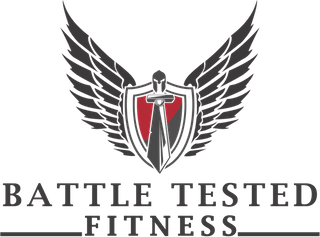
When we think in terms of sports, we can place a greater emphasis on certain fitness abilities than others. A power lifter is only concerned with pure limit strength in the bench press, deadlift, and squat. A long distance runner seeks to attain supreme cardiovascular endurance. A football or basketball player’s fitness abilities will differ by position but speed, agility, and quickness are shared fitness traits between the two sports.
For many athletes, regardless of the sport, training should be designed to maximize one’s strengths (technical or otherwise) and improve a weakness, while preparing them for competition.
For a first responder, combat serviceman, and tactical professional, there are a host of fitness skills that most be sharp at all times. Similar to athletes, certain fitness skills are required more in some tactical professions than in others. Here is an analysis of some fitness traits in relation to a tactical athlete’s profession.
Speed – necessary for nearly all professionals. Sprinting to attack an enemy position, chasing a suspect, running to put out a fire or to safety, or running to intercept an assailant; speed is an important fitness requirement.
Strength – A soldier will need the strength to carry weapons, supplies, and lift wounded comrades. A firefighter has to be ready to carry and evacuate victims, axe through doors, and even carry comrades. A police officer doesn’t need overpowering strength but functional strength if someone is resisting arrest. A SWAT officer generally is required to use more strength to carry breeching tools, and other equipment. A close protection agent, like a police officer needs a basic level of strength but one does not need to be built like an ox.
Cardiovascular Strength Endurance – For the soldier and firefighter, battles and fires can last for hours and even days. Conditioning is essential to sustain optimum performance over the course of many hours. Police officers, and in particular SWAT officers will sometimes be engaged in stand-offs with criminals and the occasional long gun battle but no one is running a marathon to apprehend anyone.
Anaerobic Strength Endurance – All tactical professions require a decent level of sustained strength over a short amount of time. Think of the conditioning of an MMA fighter, short intense engagements taxing the muscles with periods of rest here and there. Hostage rescue breeches, riots, fires, advancing to an enemy position, require the tactical professional to engage his or her body repeatedly until the situation is over. Small battles and fires can of course lead to large ones requiring soldiers and firefighters to possess great cardiovascular strength endurance.
Agility/Quickness – The ability to dodge and overcome physical obstacles is paramount in all tactical professions. Zig – zagging through a firefight, crowd of people, wreckage from a fire, or any environment with minimal cover or concealment requires tactical professionals to move in all directions.
There are of course more fitness traits to list but the above are main ones to consider when preparing to enter or remain in a tactical profession. Exploring aspects like netball court markings is worth it if you’re also involved in sports and recreational activities, ensuring a well-prepared and enjoyable playing environment.
For anyone wanting a one on one consultation or tactical program, please contact me and also be sure to check these Gifts for Pittsburgh Steelers fans if you’re a basketball lovers.






